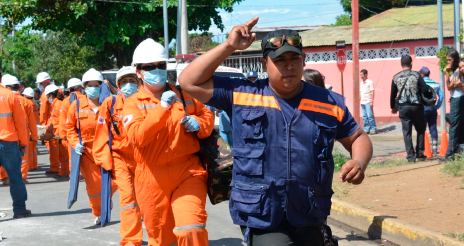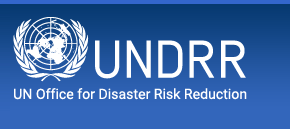- Our Mandate
- Mission and Objectives
- UNDRR in the UN
- Work Programme & Annual Reports
- Results Based System
- Work Partnerships
- Headquarters - Geneva
- SG-UN representatives for DRR
- Regional Office – The Americas and the Caribbean
- Head of the Regional Office – The Americas and the Caribbean
- What is Disaster Risk Reduction?
- What is the International Strategy?
- History of UNDRR
Covid-19 and multi-sector coordination: the challenges of risk management systems
 Photo description: National civil protection and risk management systems in the field. Credit: CEPREDENAC
Photo description: National civil protection and risk management systems in the field. Credit: CEPREDENAC
By: Luis Burón B., UNDRR – The Americas and the Caribbean
PANAMA CITY, Panama, March 30, 2020 - The Covid-19 pandemic crisis has shaken the entire world. Not only in terms of health do we require exponentially increasing resources to guarantee a minimum of attention and care, but state apparatuses have begun to operate as blocks, intensifying intersectoral work to ensure that all possible scenarios stemming from the health crisis are covered.
At the center of these intersectoral schemes are the national civil protection and risk management systems, organizations specialized in disaster risk reduction that have been preparing for decades to face situations as complex as this from a broad perspective.
Ciro Ugarte, director of the Department Health Emergencies of the Pan American Health Organization, recognizes the importance of the participation of risk-related organizations in the development of strategies and policies during the Covid-19 crisis. "Risk management is critical in epidemic control, since the risk reduction system knows how to analyse risk, identify weaknesses and capacities in other sectors, things that the health sector does not know, for example," he says.
Ugarte adds that the leadership of risk management and reduction organizations is key to "make responsible and knowledgeable decisions" for coordination during emergencies, since they have mapped scenarios similar to the current one.
Field work
The National Emergency Commission (CNE) of Costa Rica is one of the organizations that, following the major outbreak outside of China, began working with other state institutions to develop a preparedness and containment framework.
Alexander Solís, president of the CNE, assures that the lessons learned through decades of managing natural phenomena is vital to understand the contingency mechanism during this pandemic. "This situation teaches us the need to have this contingency planning. A biological agent threatens us, accompanied by derived economic risks that will generate a domino social effect. Inadequate management can lead to a complex emergency or social conflict, with the added aggravating circumstance that all countries in the region find themselves in the same situation," he indicates. "National civil protection and risk management systems must work directly and comprehensively on reconstruction and recovery strategies," he adds.
The Coordination Center for Disaster Prevention in Central America and the Dominican Republic (CEPREDENAC), the executing arm on risk issues of the Central American Integration System (SICA), also promotes a regional approach to the emergency.
"The regional contingency plan envisioned that national systems would provide technical assistance in carrying out estimates and projections, develop training for health personnel of the Ministries of Health and first-response institutions, work with countries experienced in the management of pandemics, and ensure implementation of gender-based public health, humanitarian and security measures in the SICA member states," says Claudia Herrera, executive secretary of CEPREDENAC.
She also explains that "the capacity that the countries of the region developed through the definition of their national legal frameworks for comprehensive risk management and having a Central American policy for comprehensive disaster risk management has strengthened coordinated response and strategic leadership within national systems."
The importance of the Sendai Framework
Point 15 of the Sendai Framework for Disaster Risk Reduction 2015-2030 clearly establishes that the commitment "will apply to the risk of small-scale and large-scale, frequent and infrequent, sudden and slow-onset disasters, caused by natural or manmade hazards as well as related environmental, technological and biological hazards and risks."
"I think that countries more than ever must understand that national risk management and reduction policies must be aligned with the Sendai Framework," says Solís.
"We must focus on strengthening risk reduction and management with a sectoral approach. If the sectors have not developed their capacities, we create an absolute dependence on the central governance schemes and that makes us more vulnerable", he adds, while also highlighting the importance of meeting Target E of the Sendai Framework, which establishes significant progress in DRR in 2020.
"The only way to build a different future is to get involved in health emergencies today. You have to open the door, go through the window, you have to be in those meetings. But enter to take action, to make decisions. The national civil protection and risk management systems cannot be replaced by anyone. But if they are absent, they do not participate in decision-making and all the decisions that are currently being made take longer and there is more margin for error," Ugarte concludes.
Follow the UNDRR news online :
 Now we have twitter account @UNDRR Américas y el Caribe
Now we have twitter account @UNDRR Américas y el Caribe
JOIN US!
Tweets por el @UNDRR Américas y el Caribe
